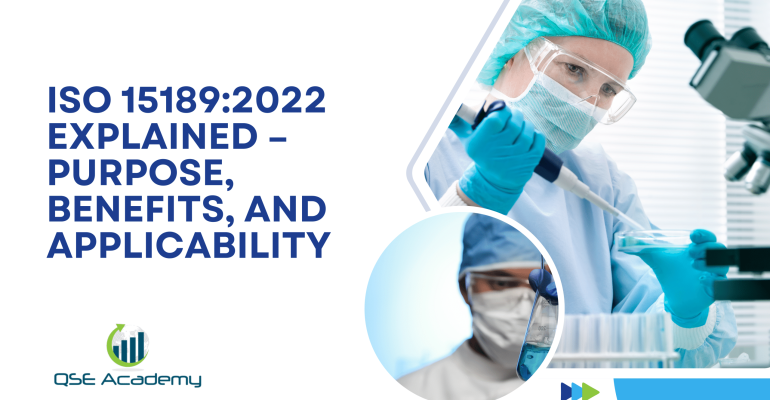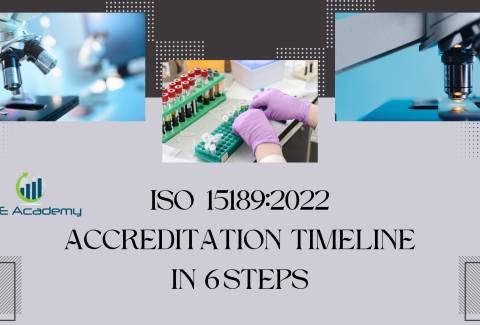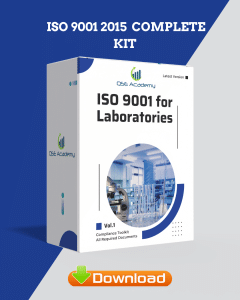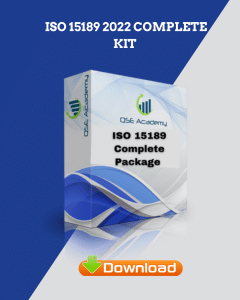ISO 15189:2022 Explained – Purpose, Benefits, and Applicability
Last Updated on October 22, 2025 by Hafsa J.
ISO 15189:2022 Explained – Purpose, Benefits, and Applicability
Let’s get real—navigating the world of medical lab standards can feel overwhelming. I’ve worked with dozens of labs over the past decade, from small regional clinics to full-service diagnostic centers, and one thing is consistent: when accreditation standards change, confusion follows.
So if you’re wondering what this new ISO 15189:2022 version means for your lab, you’re in the right place.
In my experience, most lab managers don’t have time to sift through every clause revision. But here’s the thing—you can’t afford to ignore it. The 2022 update isn’t just a routine refresh. It shifts how we think about lab quality, patient safety, and even how Point-of-Care Testing fits into the bigger picture.
This article breaks it all down for you—clearly, simply, and without the jargon overload. You’ll walk away knowing what ISO 15189:2022 is really about, why it was updated, who it applies to, and how it can actually help your lab—not just check another compliance box.
Ready to make sense of it all? Let’s dive in.
What Is ISO 15189:2022, Really?
Let’s start with the basics—but in plain English.
ISO 15189:2022 is the international standard that sets the rules for how medical labs should operate if they want to be recognized as competent and quality-focused. It covers everything from how you manage samples and equipment, to how you train your team and report results.
Now, I’ve helped labs in over a dozen countries work toward ISO 15189 accreditation, and here’s what I’ve noticed: most teams assume it’s just about ticking boxes. But it’s much more than that. This standard is designed to make sure your lab isn’t just technically accurate—it’s also safe, reliable, and built around patient needs.
What’s new in this version?
If you’ve been using the 2012 version, you’ll notice some big shifts in the 2022 update. This version:
-
Brings ISO 15189 more in line with ISO 9001 and ISO/IEC 17025 (so if you’re familiar with those, some concepts may feel more familiar).
-
Introduces risk-based thinking front and center.
-
Officially addresses Point-of-Care Testing (POCT), which is now a major focus for many labs.
-
Places more weight on patient safety—not just process control.
Here’s why this matters: standards evolve because real-world labs evolve. The way we test, the tech we use, and even how results are delivered has changed drastically in the last decade. ISO 15189:2022 is catching up with those changes—and helping your lab keep up too.
What’s Changed in ISO 15189:2022?
If you’ve already worked under ISO 15189:2012, you might be wondering, “Do I really need to change much?” Short answer? Yes—because this isn’t just a light update. It’s a shift in mindset.
Over the past couple of years, I’ve helped labs through this transition, and here’s what I’ve seen: labs that treat it like a quick re-labeling exercise end up scrambling later. But the ones that take a step back and understand the why behind the changes? They come out ahead—more confident, more efficient, and far more audit-ready.
Here’s what’s different in the 2022 version—and why each change actually matters to your lab’s daily work.
1. It aligns more closely with ISO/IEC 17025 and ISO 9001.
This is probably the most structural shift. The new version mirrors concepts from other well-known ISO standards, like process-based management and risk awareness.
Why this matters:
If your organization already works with ISO 9001 or 17025, this change helps unify your systems. It’s less duplication, fewer silos, and smoother audits across departments.
2. Risk-based thinking is now front and center.
This isn’t just a buzzword. ISO 15189:2022 wants labs to actively identify, assess, and control risks that could affect the quality of results or patient safety.
In my experience, most labs already do this informally—like double-checking unusual test results or flagging unreliable reagents. Now, it’s about formalizing those practices and building them into your quality system.
Practical tip:
Start small. Look at your high-volume or high-risk tests and map out the potential failure points. Then build risk control into your procedures.
3. Point-of-Care Testing (POCT) is officially part of the scope.
This change caught a few clients by surprise. If your lab oversees bedside tests, mobile diagnostics, or any testing outside the main lab, you’re now responsible for their quality just like you are for in-lab testing.
Why this matters:
POCT can impact patient care just as much as lab-based tests. ISO 15189:2022 recognizes that—and makes it your job to ensure consistency, accuracy, and proper oversight.
What’s the Purpose of ISO 15189:2022?
Let’s cut through the jargon. At its core, ISO 15189:2022 exists for one reason—to make sure medical labs consistently deliver reliable, accurate results that healthcare professionals can trust, and that ultimately protect patient safety.
In my work with labs over the years, I’ve seen how easy it is to get caught up in paperwork and lose sight of that core purpose. But this standard brings the focus back to what truly matters: quality with impact.
Here’s what ISO 15189:2022 is really aiming to do:
It protects patients by improving the accuracy and consistency of lab results.
That means putting processes in place that catch errors early, standardize how samples are handled, and make sure the results clinicians receive are right the first time. Whether it’s a routine blood count or a critical infectious disease screen, those results have to be dependable.
It builds confidence in your lab’s competence.
Accreditation under ISO 15189 tells hospitals, regulators, and even international partners: “This lab knows what it’s doing.” It’s a signal that your methods, equipment, staff training, and quality systems are not just in place—but effective.
It drives continuous improvement.
This isn’t a one-time certificate. The standard is designed to help you monitor performance, find gaps, fix them, and keep evolving. And honestly, that’s where the real value is. I’ve watched labs use ISO 15189 not just to meet requirements, but to improve turnaround times, reduce errors, and even boost team morale—because people like working in systems that work.
Who Needs ISO 15189:2022 Accreditation?
This is a question I get a lot—“Is ISO 15189 something we actually need, or is it just for the big labs?”
Here’s the straight answer: if your lab provides medical testing that influences patient care, ISO 15189:2022 is either already expected of you—or it soon will be.
I’ve worked with all kinds of labs over the years—hospital labs, private diagnostic centers, university-affiliated facilities, even small specialized clinics. And in every case, once their testing results were used for diagnosis or treatment decisions, they were squarely in ISO 15189 territory.
So, who exactly does this apply to?
1. Hospital-based laboratories
Whether you’re handling inpatient work, ER samples, or supporting a surgical team, your results have a direct impact on clinical decisions. ISO 15189 ensures those results are trustworthy, every time.
2. Private diagnostic labs
These labs often serve both walk-in patients and doctors’ offices. Accreditation helps boost credibility—and opens the door to contracts, partnerships, and recognition.
3. National reference labs and research-linked facilities
If you’re involved in confirmatory testing or supporting public health programs, ISO 15189 signals that your data can be relied on at scale.
4. Labs managing Point-of-Care Testing (POCT)
This is a newer twist. If your lab oversees POCT devices—whether inside or outside your facility—you’re now expected to apply the same level of quality oversight.
What if you’re a small lab?
Here’s something I tell my smaller clients all the time: size doesn’t disqualify you—sloppiness does. ISO 15189 is flexible enough to be scaled down, as long as your quality system is clearly defined and consistently applied. One of the most efficient labs I’ve helped through accreditation had a team of just five people. What mattered was that they documented their processes, trained their team, and owned their quality system.
So yes—if your lab is producing results that inform medical decisions, ISO 15189 isn’t optional anymore. It’s the new baseline for trust.
What Are the Real Benefits of ISO 15189:2022 Accreditation?
Let’s be honest—pursuing ISO accreditation can feel like a massive undertaking. There’s documentation, training, internal audits… and if you’re already short-staffed, it might seem like one more burden.
But in my experience, once labs get through the initial push, they often say the same thing: “We should’ve done this sooner.”
That’s because ISO 15189:2022 isn’t just about passing an audit—it’s about building a lab that runs better, earns more trust, and handles change with less chaos.
Here’s what I’ve seen as the biggest, tangible benefits for labs that go all-in:
1. It builds serious credibility—with clients, regulators, and partners.
Whether you’re working with hospitals, insurance providers, or government health agencies, ISO 15189 accreditation says: we know what we’re doing. It’s an internationally recognized signal that your lab is competent, consistent, and quality-driven.
This isn’t just for show—many contracts and tenders now require ISO accreditation. I’ve seen private labs land major hospital partnerships because they were ISO 15189 certified while their competitors weren’t.
2. It improves how your lab runs—internally.
I’ve watched labs streamline their workflows, reduce sample handling errors, and shorten turnaround times simply because ISO pushed them to clarify their processes. When your procedures are documented, your team trained, and your risks identified ahead of time, the whole system runs smoother.
One client I worked with cut their average test re-run rate by over 30 percent in the first year after getting accredited. That’s not just quality improvement—it’s cost savings.
3. It strengthens your lab’s ability to adapt and grow.
ISO 15189:2022 is designed around continuous improvement. That means you’re not just meeting today’s standards—you’re also prepared for tomorrow’s challenges. Whether it’s scaling up for higher test volumes, introducing new tech, or handling a pandemic-level demand spike, the structure gives you flexibility without losing control.
4. It boosts team accountability and morale.
Here’s something that doesn’t get talked about enough: when staff know what’s expected, when they’re trained properly, and when they can see the lab achieving something meaningful—like accreditation—it changes the culture. People take more pride in their work. And that shows in the results.
How ISO 15189:2022 Applies Across Different Types of Labs
One of the most common misconceptions I hear is that ISO 15189 is only for large, full-service clinical labs. That’s just not true. Over the years, I’ve helped all kinds of laboratories—from niche diagnostic startups to sprawling hospital networks—adapt ISO 15189 to fit their unique setups.
And the 2022 version? It’s even more inclusive and flexible than before.
So whether you’re running a microbiology lab in a regional hospital or managing genetic testing at a private center, ISO 15189 can apply to you.
Here’s how it breaks down across different lab types:
Clinical Chemistry, Hematology, and Immunology Labs
These are the bread-and-butter labs in many hospitals and diagnostic centers. Because test volumes are high and turnaround expectations are tight, the standard’s emphasis on workflow control, traceability, and quality assurance is especially relevant.
What I’ve seen work well:
Labs that map out every step of sample handling—from collection to reporting—see huge reductions in lost samples and reporting delays.
Microbiology and Infectious Disease Labs
Accuracy and contamination control are everything here. ISO 15189 puts a strong focus on environmental monitoring, result verification, and corrective action protocols—all critical when dealing with potentially dangerous pathogens or antibiotic resistance testing.
In practice:
One lab I supported implemented a new process for tracking environmental swabs after an audit recommendation—and ended up identifying a recurring contamination issue they hadn’t seen before.
Molecular Diagnostics and Genetics Labs
These labs are becoming more common and more complex. With highly sensitive instruments and intricate workflows, ISO 15189 helps standardize methods, validate processes, and keep error margins extremely low.
Key advantage:
It pushes labs to fully validate new testing platforms before going live—something that can get overlooked when expanding quickly.
Point-of-Care Testing (POCT)
This is one of the biggest additions in ISO 15189:2022. If your lab oversees POCT—whether it’s in a clinic, a hospital ward, or even mobile testing units—you’re now expected to apply the same quality standards across the board.
Why this matters:
I’ve seen firsthand how inconsistent POCT practices can lead to major quality issues. Now, ISO 15189 gives you the framework to bring structure and accountability to those decentralized testing sites.
Smaller, Specialized Labs
Even if you only perform one category of tests—like toxicology or fertility testing—you’re still within the scope. The standard scales to fit. What matters most is that your processes are defined, your people are competent, and your results are consistently accurate.
Pro Tips and Insider Insights
Over the years, I’ve walked dozens of labs through ISO 15189 implementation and upgrades. And while every lab is different, there are a few tips I find myself repeating again and again—because they work.
If you’re planning to align with the 2022 version, these will save you time, money, and a few unnecessary headaches.
Pro Tip 1: Don’t Treat the Transition Like a Paper Exercise
This one’s big. Updating your quality manual is just the start. The real work happens in your day-to-day operations. If you simply rewrite documents without changing habits on the ground, your audit’s going to be rough—and your quality system won’t actually improve.
What to do instead:
Hold team walkthroughs. Talk through the changes. Make sure everyone—from technicians to supervisors—knows how the updates affect their role.
Pro Tip 2: Start Risk Management with What You Already Know
ISO 15189:2022 wants you to apply risk-based thinking—but you don’t need a brand-new framework to get started. Most labs already know their problem areas. Think delayed results, equipment downtime, mislabeling—those are risks.
What I suggest:
Pick the top three issues you’ve had in the past year. Map out what caused them, how they were handled, and how they could’ve been prevented. That’s your first risk register.
Pro Tip 3: Don’t Overlook POCT Oversight
This one’s become a surprise headache for many labs. If you’re responsible for POCT—even if the devices are used by nurses or other departments—you’re now expected to ensure those results meet quality standards.
Here’s what I’ve seen work:
Create a POCT coordinator role or assign oversight to a qualified lab staff member. Provide training, keep documentation simple, and set up regular spot-checks.
Pro Tip 4: Use Internal Audits to Find Real Gaps—Not Just to Check Boxes
Internal audits are where great labs catch issues before they become compliance problems. But only if they’re done honestly and without fear.
What I recommend:
Rotate who performs the audits. Get fresh eyes on each area. And don’t be afraid to uncover problems—addressing them now builds credibility and resilience later.
Common Mistakes and FAQs About ISO 15189:2022
Even experienced labs run into the same pitfalls when implementing or upgrading to ISO 15189:2022. I’ve seen it happen to well-run teams that simply underestimated a few details—and it ended up costing them time, money, or worse, their accreditation.
Here’s what to watch out for—and what people are asking most often right now.
Common Mistakes to Avoid
Mistake 1: Thinking this is just a clause renumbering update
A lot of labs assume the 2022 version is mostly cosmetic. It’s not. This revision introduces risk-based thinking, includes POCT, and places more emphasis on leadership and outcomes. If you treat it like a quick patch job, you’re going to miss the deeper intent—and the benefits.
Mistake 2: Ignoring POCT responsibilities
This one’s big. If your lab is even loosely responsible for managing or overseeing point-of-care devices, you can’t ignore them anymore. ISO 15189:2022 makes you accountable for the quality of those results.
Mistake 3: Underpreparing staff for the cultural shift
The best quality system won’t hold if your team isn’t trained and engaged. I’ve seen labs fail audits not because they had bad processes—but because staff didn’t understand or follow them. Invest in training and real conversations.
Mistake 4: Relying on templates without tailoring
Templates are a great starting point. But if you copy someone else’s SOPs without adjusting them to your workflow, you’re setting yourself up for confusion and nonconformities during an audit.
Top 3 FAQs About ISO 15189:2022
Q1: Is ISO 15189:2022 mandatory?
No, it’s not a legal requirement in most countries—but it is strongly recommended, especially if your lab works with hospitals, international partners, or government programs. And in many regions, regulators are starting to expect it as the baseline.
Q2: How long do we have to transition from the 2012 version?
Most accreditation bodies have given labs until the end of 2025 to make the switch. But here’s my advice: don’t wait. The earlier you start, the smoother your internal rollout and the less stressful your next audit will be.
Q3: Can small labs really implement ISO 15189?
Absolutely. I’ve helped labs with fewer than ten staff get accredited. The key is to scale the system to match your operations. Keep it simple, but thorough. Accreditation isn’t about size—it’s about consistency and clarity.
What ISO 15189:2022 Really Means for Your Lab
If you’ve made it this far, you probably already get it—ISO 15189:2022 isn’t just another compliance hurdle. It’s a practical, forward-thinking standard that helps labs deliver better results, protect patients, and run more efficiently.
And here’s the thing: when it’s done right, it doesn’t just satisfy auditors—it genuinely improves how your lab functions day to day. I’ve seen it happen over and over again.
So, let’s recap the essentials:
-
The standard has evolved—with a stronger focus on risk, leadership, and patient safety.
-
It applies across all lab types—not just the big players.
-
It delivers real value—in credibility, performance, and long-term sustainability.
-
It’s doable for any lab—as long as you approach it with a clear plan and the right mindset.
In my experience, the labs that succeed with ISO 15189:2022 are the ones that don’t just aim for compliance—they aim for clarity, consistency, and continuous improvement.
Whether it’s ISO 9001, ISO 22000, or the cosmetics-focused ISO 22716, I’ve spent my career I’m not here to call myself an expert—I prefer “enthusiast” because I truly love what I do. When I’m not writing about standards, you’ll probably find me playing Piano 🎹, connecting with people, or diving into my next big project💫. I’m an engineer specialized in the food and agricultural industry
make ISO standards less intimidating and more approachable for everyone.
turning complex jargon into clear, actionable steps that businesses can actually use.
There’s something incredibly rewarding about helping people navigate food safety and quality management systems
in a way that feels simple, practical, and even enjoyable.
I have a Master’s in QHSE management and over 12 years of experience as a Quality Manager
I’ve helped more than 15 companies implement ISO 9001, ISO 22000, ISO 22716, GMP, and other standards
My clients include food producers, cosmetics manufacturers, laboratories, and service companies
I believe quality systems should be simple, useful, and efficient.












